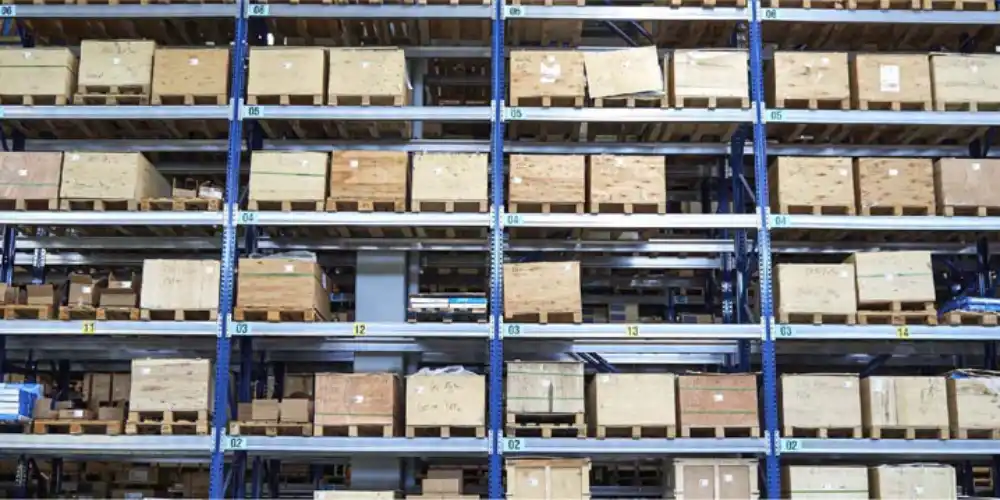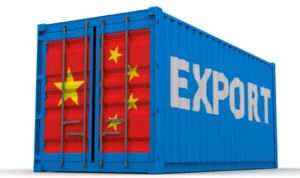China is most well-known for its exports. Most people think of China as a leading textile and electronics exporter, but a little-known fact is that it also dominates some other industries. Export can be seen as the driving force behind China’s strong growth and dominance. The corresponding article for imports can be found here.
The size of China’s export market has been growing substantially over the last decade. In 2010, it overtook Germany to become the world’s largest exporter. The overall Chinese exports amounted to $2.119 trillion in 2016, down 7% from the last year. This has mostly been caused by the poor economic conditions throughout the world for this period. This is still $1,533 for each of the 1.382 billion inhabitants which is significantly more than the sum of the imports.
This phenomenon in the Chinese export market also creates a scenario which is referred to as a trade surplus. Although high exports are good, an unbalanced economy can create problems. Please refer to the balance of trade article to read about the development and problems of China’s trade surplus.
Top 10 Exports from China
When people think Chinese export goods, they are often quick to assume it is only electronic products. Estimated at $557.3 billion a year, it is easily China’s major export. However, electronics only take up approximately a quarter of China’s export market. This shows how big the China’s export market is, while also underlining how much more variety there is than just electronics.
Other popular China export products include industrial machinery and equipment, which comes in at an estimated $344 billion a year. As this product category is not consumer-focused it often gets overlooked when people consider the popular Chinese exports. However, when it represents 16.3% of China’s overall exports in 2016, it shows how significant it is to China’s economy.
China’s notorious export orientation is an important contributor to world trade.
Living accessories like furniture, lighting and prefab buildings totals $89.5bn. Although this is a significant amount, it only totals about 4.2% of total Chinese exports.
At a combined fourth and fifth place is clothing. This category covers both knit and woven textiles and amount to a total of $177bn, converting into 6.9% of all exports. China has historically been the textile leader, but a world hungry for technology has seen China using its resources to supply this demand, shifting the textile industry to other upcoming exporting giants, India and Bangladesh.
Next Chinese export products are medical supplies, a market covering 3.2% of all Chinese exports. Although China does produce a lot more, its growing population also factors into this equation, causing higher inward consumption of these supplies
The 7th most exported article is plastic ware. Often labor intensive, these products require a market geared towards labor, something China excels in. The need for plastic products globally is high, but is often seasonal. Therefore it only amounts to $64 bn or 3% of Chinese exports.
Cars are also a big export, although the success of China as a whole does seem to have caused a shift to a consumption-based economy leading to cars factoring as only 2.9%, or $60bn, of the total Chinese export market. With many first world countries producing their own, this figure is understandable.
With China often embarking on massive civil projects, only a small amount of ores and associated products gets exported, earning this category a 9th place. This category has also lead to many trade disputes, especially with the US, as China is regularly being accused of dumping cheap ores on the market, negatively affecting the global economy. Even so, this category only amounts to $53.1bn (2.5%) of all China’s export market.
Lastly, a massive market in which China excels at supplying is shoes. Globally, most shoes are either wholly produced in China directly, or at the very least, assembled there. Although this may be the case, this category only accounts for $47.8bn (2.3%) of all exports.
The top 10 exports from China and their percentage of total exports with respect to all trade partners (2016):
- Electrical machinery, equipment: US$557.1 billion (26.3% of total exports)
- Machinery including computers: $344.8 billion (16.3%)
- Furniture, bedding, lighting, signs, prefab buildings: $89.5 billion (4.2%)
- Knit or crochet clothing, accessories: $75 billion (3.5%)
- Clothing, accessories (not knit or crochet): $72.8 billion (3.4%)
- Optical, technical, medical apparatus: $67.9 billion (3.2%)
- Plastics, plastic articles: $64 billion (3%)
- Vehicles: $60.4 billion (2.9%)
- Articles of iron or steel: $53.1 billion (2.5%)
- Footwear: $47.8 billion (2.3%)
The Trend in China’s Exports Overview
China has started to see the growth rate of the economy slow down. This trend can also be seen within the export market and in February 2016 saw a 25.4% year on year drop. This has been caused partly by the business shutdown occurring during the Lunar New Year holiday but many economists predict the problem goes further. Global demand for Chinese export products has decreased as well, which has ultimately worsened the problem.
Chinese exports have traditionally been deemed of poor quality with low pricing, however, this aspect of exports is slowly changing. China has started to focus on higher quality goods and specialized products to stay competitive and if Apple can trust a Chinese firm to manufacture their I-Phones, the change in strategy seems to be working.
In fact, companies in China have become experts at producing electronics of all varieties. An often overlooked aspect is that China has the largest Information and Communications Technology (ICT) market in the world. As this equipment is often extremely specialized it shows that China has so much more to offer than their reputation leads us to believe.
The quality of products with this sign are improving.
What Will Likely Affect My Price for Getting Exports from China?
Subsidies
To maintain the position of being the world’s largest exporter, China offers large subsidies to exporting firms in the form of tax rebates. This policy has resulted in over a third of Chinese exports companies selling over 90% of their product abroad. These tax incentives create a difficult situation where Chinese consumers often pay more for similar goods than foreign consumers. Such subsidies also cause trade disputes with other nations—particularly the US and the EU.
The United States in particular, has brought many cases to the WTO as the two countries have been unable to come to an agreement on many issues surrounding international trade.
Export Duties
A select group of goods (resource based and semi-manufactured products) have export duties levied that have to be paid at customs. China currently levies the following items with tariffs: coal, crude oil, iron alloy and chemical fertilizers. These tariffs have been made to protect domestic resources.
Combining the modern trends and the export subsidies China offers leaves a lot for an importer to benefit from. To learn more about benefiting from Chinese import read trade fair tips
Special Economic Zones
As discussed in this article, special economic zones offer preferential treatment to companies willing to invest in that specific geographical area. Reduced income tax is but one of the many incentives China utilizes to seek investment in these areas.
Conclusion
Looking at the total value of the Chinese export categories, one can easily see why China is the world’s leading exporter in many fields. Although these trends clearly show the massive marketing potential of these items, many smaller underdeveloped fields can also be exported from China, many of which will also not have such fierce competition. Finding an export category can be hard at first, but with proper research about the various sectors in the industry, it becomes easier to enter the Chinese market.






